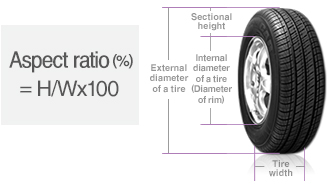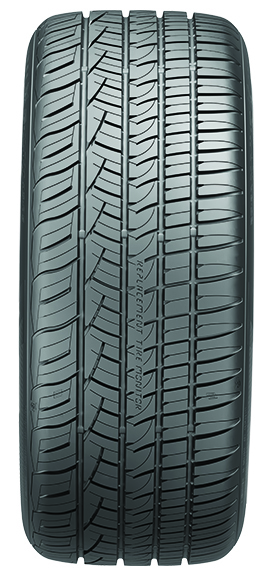Your Shopping Cart
Your cart is empty.
Subtotal ( items)
Instant Rebate Applied:
Promo Code Applied: ID.me Discount Applied:
Have a Promo Code?
Size:
Item
Item
Selected for:
/ each
Add-Ons
Wireless air pump capable of pumping up to 150 psi with 2000 MAH power bank.



Fully protect your clothes and vehicle interior during transportation of your tires. For Tires up to 31" tall and wheels up to 22".
Per sensor
Add TPMS Sensors
/per sensor
Please confirm the make, year, model and trim of the vehicle you want to purchase for:
How many sensors do you need?
The vehicle you have selected is not compatible with aftermarket TPMS Sensors.
Enter a different vehicle to add TPMS sensors

 Front Tire Size:
Front Tire Size:
 Rear Tire Size:
Rear Tire Size:
 Your Vehicle:
Your Vehicle:
Pros & Cons of Staggered Fitment

Attractive Design

Improved Handling

Improved Cornering
Bumpier Ride
Poor Traction in Snow
How do I find my tire size?



Need help?
 Your Vehicle:
Your Vehicle:
Pros & Cons of Staggered Fitment

Attractive Design

Improved Handling

Improved Cornering
Bumpier Ride
Poor Traction in Snow
How do I find my tire size?



Need help?
Pros & Cons of Staggered Fitment

Attractive Design

Improved Handling

Improved Cornering
Bumpier Ride
Poor Traction in Snow
Need help?
Need help?
How do I know if I have an LT tire?

 Your Vehicle:
Your Vehicle:
Sorry, we could not find any available
wheels for your sizing selections.
Need help?
What is Tire Aspect Ratio? Let's Do Some Math!
By Tire Agent Staff
January 27, 2022
When you hear the term "aspect ratio," photography might come to mind. Aspect ratio is the relationship between the height and width of any image. The term is also used with computer screens, televisions, engineering, graphic design and several other fields.
But, tires are round, not square like photos and video screens. Well, aspect ratio isn't limited to the Ansel Adams and electronic engineers of the world. It's also important to know when choosing the right tires for your vehicle. You're probably thinking great, math! Who knew adulting would be so difficult?
What Does Aspect Ratio Tire Size Mean?
The aspect ratio tells you the proportion of the height of the tire's sidewall to its width. It is indicated on the tire sidewall as a percentage and simply identified as a percentage of the section height divided by the section width. This ratio means the height of the tire's sidewall compared to its width, helping you understand how much sidewall is visible on your tire.
So a tire aspect ratio of 55 means the height is equal to 55% of the width.
You can see an in-depth breakdown of what those numbers mean in our article, "What Do The Numbers On Tires Mean? Decoding Tire Number Meaning."
For now, let's focus on a tire's aspect ratio and why you should care about it. It's not as dull as you may think, and you will learn some valuable information.
Tire Numbers You Need to Know
One of the most common tire sizes for passenger cars is P205/65R15. Here's what those numbers mean in laypeople's terms.
The 205 represents 205 millimeters wide from sidewall to sidewall when looking at the tire straight on. The 15 is the rim diameter of the wheel that the tire will fit, and the 65 is the aspect ratio.
These sizing metrics make up what's known as tire ratio and determine your vehicle's performance on the road. It's a measure of how wide a tire is in relation to its height. More on that later.

What's the difference between, say a 70 series tire versus 75 tire size? A tire size 235/75/16, for example, would be taller than a tire with 235/70/16. Make sense? Good. Now, why does this matter?
Nexen explains tire aspect ratio.
Why Tire Ratio Matters
Here's the payoff to all the nerdy calculations. When you have an aspect ratio of 65, the sidewall is 65% as high as the tire is wide. The taller the sidewall, the more rubber there is to cushion you from bumps and road irregularities. Which logically makes for a smoother, more comfortable ride.
So, why not opt for a bigger aspect ratio and the smoothest ride possible? If you don't stay within your vehicle's recommendations, you could experience irregular driving dynamics and get worse gas mileage.
Your tires will also respond differently to the road and affect the amount of power needed to make turns. This will cause your car to be less efficient and drive differently when it comes to handling and safety.
Some people even choose to go with a smaller aspect ratio. Think muscle cars. They do this for a couple of reasons. One is they can look pretty cool when combined with bigger rims. Low-profile tires can also offer enhanced cornering and braking performance.
The key takeaway is a smaller tire ratio will result in a more rigid, bumpier ride. That's why it's best not to go too low with your tire’s aspect ratio.
Can You Change Your Tire Size?
Changing tire sizes wasn't a big deal with older cars. Vehicles manufactured in the early 1980s or earlier could easily handle different tire sizes. The main problem it caused was potentially imprecise speedometers.
If you were to switch tire size on an older car, the only dimensions you could modify are the aspect ratio and width. Avoid changing the wheel size, which could bring on more extensive problems.
But changing the tire size on modern vehicles could cause issues like reduced gas mileage, rough handling, alignment problems and excessive stress on the car's powertrain. So, yes, you can use tires with different aspect ratio, but you could affect your gas mileage and handling. We suggest to check with tire experts before upsizing or downsizing tires.
That's why we advise staying within the manufacturer's recommended sizing. Your neck, back and wallet will thank you later.
Photo 92808672 | Inara Prusakova | Dreamstime.com
How to Qualify for the $50 Offer
- Add items to your cart and begin checkout.
- Select PayPair and apply for financing.
- If you’re approved by a participating lender, you’ll see a $50 promotional rebate applied to your order total.
-
To receive the $50, you must:
- Complete your purchase with a qualifying lender,
- Agree to the payment terms,
- And make the required number of consecutive on-time payments, as specified by the lender.
Note: Offer available only through select lenders. Additional eligibility requirements and conditions apply. Rebate may be issued after verification of qualifying payment activity. Terms subject to change.
How to Purchase Tires and Wheels
With a Payment Plan
Tire Agent's payment plans make it easy to get the best partial or full set of tires and wheels for your vehicle.
It's fast, secure and won't affect your credit score
Match with multiple lenders
Why Choose PayPair?
PayPair’s Partners and Plans

No Money Down

No Money Down

No Credit Needed*

No Money Down

$1 to Start!*

No Money Down

No Credit Needed*

$1 to Start!*

No Money Down
Other Payment Plans

$0 to Little Down

Pay with your bank account

Simplified checkout experience

Faster and easier than using cards or cash

Simplified checkout experience

Faster and easier than using cards or cash
*SNAP: The advertised service is a lease-to-own agreement provided by Snap RTO LLC. Lease-to-own financing is not available to residents of Minnesota, New Jersey and Wisconsin. NO CREDIT NEEDED: Not all applicants are approved. While no credit history is required, Snap obtains information from consumer reporting agencies in connection with applications, and your score with those agencies may be affected. PAYMENT PLAN: The standard plan consists of renewable lease terms. To exercise an early ownership, consumers must make regular payments on time and schedule additional payments via the customer portal or by contacting Customer Care at 1-877-557-3769. KATAPULT: The Promotional Initial Payment (plus any applicable taxes and fees) is due at lease signing. Your lease-purchase payment amount will be determined after you select your product(s). You will not acquire ownership of the product(s) if the total amount necessary to acquire ownership is not paid. The Promotional Initial Payment does not reduce the cost of the lease-purchase agreement. The Promotional Initial Payment is only available when shopping at Tire Agent through the Katapult mobile app and at Tire Agent’s website. Product pricing subject to change and availability. Disclosure: 90-day early purchase option (EPO) terms and conditions apply: 90-Day (3 months in CA) You can buy out your lease-to-own agreement within the first 90-days. This amount includes the cash price, plus the lease-to-own cost for the first 90-days. Taking advantage of the 90-day purchase option will save you the most money! PROGRESSIVE: Ownership by rental/lease agreement with Progressive Leasing costs more than the retailer’s cash price. Select items only. Cancel or purchase early at any time. Not available in MN, NJ, VT, WI, WY. Progressive Leasing obtains information from credit bureaus. Not all applicants are approved. Standard agreement offers 12 months to ownership. 90-day purchase options cost more than the retailer’s cash price (except 3-month option in CA). To purchase early or to cancel lease, you must call 877-898-1970. Retailer cannot activate early purchase options.


